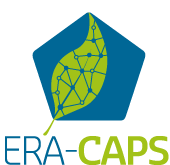Designing C4 breeding strategies using genetic enablers of C4 evolution
- Acronym C4BREED
- Duration 36
-
Project leader
Professor Dr. Andreas Weber, University of Duesseldorf, funded by DFG
-
Other project participants
Professor Dr. Julian M. Hibberd, Univeristy of Cambridge, funded by BBSRC
Professor Dr. Benjamin Stich, University of Duesseldorf, funded by DFG
Professor Dr. Daniel Voytas, University of Minnesota, funded by NSF (pending)
- Funding
- Total Granted budget
Abstract
C4 photosynthesis is used by the most productive crops and native vegetation on the planet. However, the molecular mechanisms and the genetic architecture underlying this complex trait are poorly understood and this impedes efforts to introduce this desirable trait into C3 crops. Recently, we and others have made significant progress both in understanding the mechanisms that prime species to evolve C4 photosynthesis, and also the evolutionary trajectories that then lead to the full C4 trait. This proposal builds on these recent findings, but combines our expertise in C4 photosynthesis with a synthetic experimental evolution approach that aims to experimentally recapitulate the initial steps towards C4 evolution. Using this approach, we will translate the mechanistic understanding of the molecular evolution of a complex trait into an innovative breeding approach that is informed by evolutionary biology and enabled by synthetic biology and genome editing. To achieve this, we have assembled a new team made up of international authorities on: wide-crossing to breed complex traits (Stich), DNA editing technologies and synthetic biology (Voytas), and combined this with the expertise on C4 photosynthesis (Hibberd and Weber). Our specific aims are to test the hypothesis that establishment of a rudimentary photorespiratory carbon pump reduces the carbon dioxide compensation point and induces a primordial C4-like carbon cycle; to leverage the power of inter-species crosses between C3 and C3-C4 intermediate Brassicaceae species to identify key anatomical and biochemical enablers of C4 evolution by quantitative genetics; and lastly, to employ genome editing and wide intra-species crosses to introduce C4 enablers into C3 Brassicaceaen models and crops, such as oilseed rape. The outcomes of this work will include the first experimental test of a model that predicts how the complex C4 trait evolved independently on over sixty occasions; the first use of wide-crossing, new sequencing technologies and advanced genetic approaches to identify unknown components of C4 intermediacy and photosynthesis; and the first implementation of genome editing and synthetic biology to test whether components of C4 intermediacy and photosynthesis can be implemented in A. thaliana and also oilseed rape.
